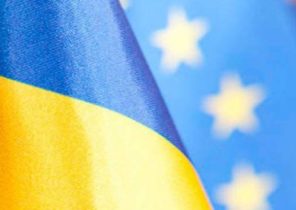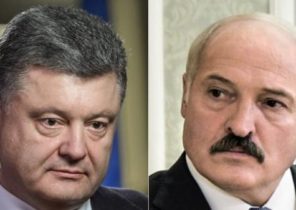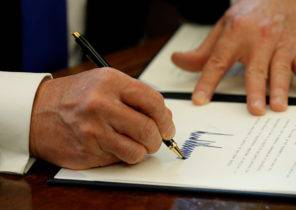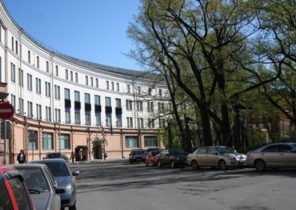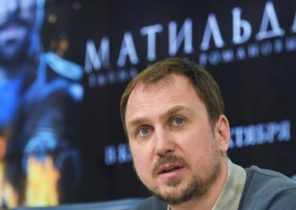
“Every living German to kill women, children and the elderly. The dead Germans are harmless. And if I kill a German, so I will save lives,” said one of Lyudmila Pavlichenko.
When the Nazi Germany in June 2941 years invaded the Soviet Union, many women came to the defense of their homeland.
More than 550 thousand were in the armed forces of the USSR during the war. Most — in air defense, a in the auxiliary parts in the rear. But about 100 thousand fought at the front.
Women were pilots, drove tanks, shot from a machine gun. And they were snipers.
The best of them was Lyudmila Pavlichenko. During the war she destroyed 309 enemy.
Recently Olga Shirnina, a translator from Moscow, painted and published photos Pavlichenko and other women snipers and thus gave its stunning new life to some of the forgotten soldiers of the war.
“Sometimes a picture speaks more than words, and I’d be happy if more people get to know Russia and Russian because of my painted photographs,” said Olga Shirnina in an interview with the Daily Mail.
“It was a real phenomenon: no other country had as many female soldiers, snipers, pilots and nurses.”
She was a volunteer
Lyudmila Pavlichenko was born near Kiev in the Ukraine in 1916. She later described herself as a real “Tomboy” who was not more diligent at school, but she could never agree that boys are better at something than she is.
“When one neighbor boy began bragging about how well it shoots, I decided to show that girls can be worse. And I got to practice a lot”.
In 1937, she began studying at the Kiev University. When war broke out, she studied history. Early in the war women in the Red Army did not take, so she had to try to make it in the army took.
It tried to identify in the nurses, but eventually she was able to demonstrate his sniper skills.
And that settled it.
She began to serve in the 25th infantry division and was sent straight to the front.
“Nothing could stop”
But when she got to the front, it immediately paralyzed with fear — until a German bullet killed one of her comrades.
“He was such a good, funny guy. And killed him — and he was right next to me. After that nothing could stop it.”
Later that same day she killed two of their first German sniper rifles — Mosin-Nagant rifles, caliber 7.62 mm.
Pavlichenko became one of the approximately 2 million women snipers in the USSR, she fought in Moldova and near Odessa, and then the unit pushed back into Sevastopol on the Crimean Peninsula.
To the extent that, as a growing number destroyed by her enemies, she received all the more risky tasks, in particular related to the destruction of enemy snipers. And she came out the winner in at least 36 duels with their German opponents.
“It was one of the most amazing experiences of my life,” she said about these dangerous tasks.
Already in may 1942 on her account was 257 dead enemies. And there is no “inner conflict”, she did not feel.
“The only feeling I have is satisfaction of the hunter, piled production,” — she said in an interview after the war.
She was sent to USA
In June 1942, Pavlichenko was wounded during a mortar attack. But she became more known, and it was withdrawn from the front and sent to rehab.
In late 1942, it was again withdrawn from the front, so she was in Sevastopol when it fell. At that time she was sent to the US in a propaganda drive, to ensure American support for the opening of a “second front” against Germany.
Stalin wanted the Western allies invaded the country, occupied by the Germans, and Germany — to reduce the huge German pressure on the Red Army. But this was, however, not earlier than after the allied landings in Normandy on 6 June 1944, and much later, as fortunes of war changed for the Germans on the Eastern front.
Lyudmila Pavlichenko was 25 years old, she spoke no English, but became the first citizen of the USSR, adopted in the White house.
The President’s wife Eleanor Roosevelt invited her to tour the US, so she told me about their experiences. Many of the native words Pavlichenko preserved in the clippings of the time.
Then many journalists paid attention to her (lack of) femininity, wrote that she does not use makeup, and the shape of her size…
A journalist from the Washington Post even wrote that it was strange that Pavlichenko so didn’t care about how she looks.
“What a successful soldier must be proud of how it looks, not a part of military philosophy?” — wrote Malvina Lindsay (Malvina Lindsey).
Hidden bad negative comments made Pavlichenko feel that its provoked.
“I wear my uniform with pride. On my tunic the order of Lenin, it is the blood war. Probably, in America, the most important thing that women below the form wore silk underwear. They don’t know what it means to form,” she told Time Magazine.
She became a Hero of the Soviet Union
During a tour of the U.S. with Eleanor Roosevelt, she learned to speak in public much bolder, according to Gilbert king (Gilbert King) from the Smithsonian, analyzed newspaper clippings of her interviews.
“Gentlemen, I am 25 years old, and I destroyed 309 Nazi occupiers. Do not you think, gentlemen, that you for quite a long time hiding behind my back?” she asked the large audience gathered in Chicago.
When Pavlichenko returned home to the Soviet Union, it received the award hero of the Soviet Union, she was given the rank of major, the stamp was issued with her image.
She was no longer involved in direct battles with the Germans, but instead he became an instructor and trained Soviet snipers until the war ended. After the war was educated historian. Died in 1974, she was only 58 years old.
About 200 thousand soldiers-women were awarded during the war. 89 of them was awarded the highest title of Hero of the Soviet Union.
But the highest posts in the Soviet armed forces women received rarely. Officially men and women were equal, but the Patriarchal system existed, no matter what.
Although the Soviet Army had a lot of women, a percentage of them were not enough, in a male environment, they often were creatures of alien.
The Soviet propaganda apparatus was interested in the depiction of the existence of Soviet women. But how they actually lived in the war, little is known.
